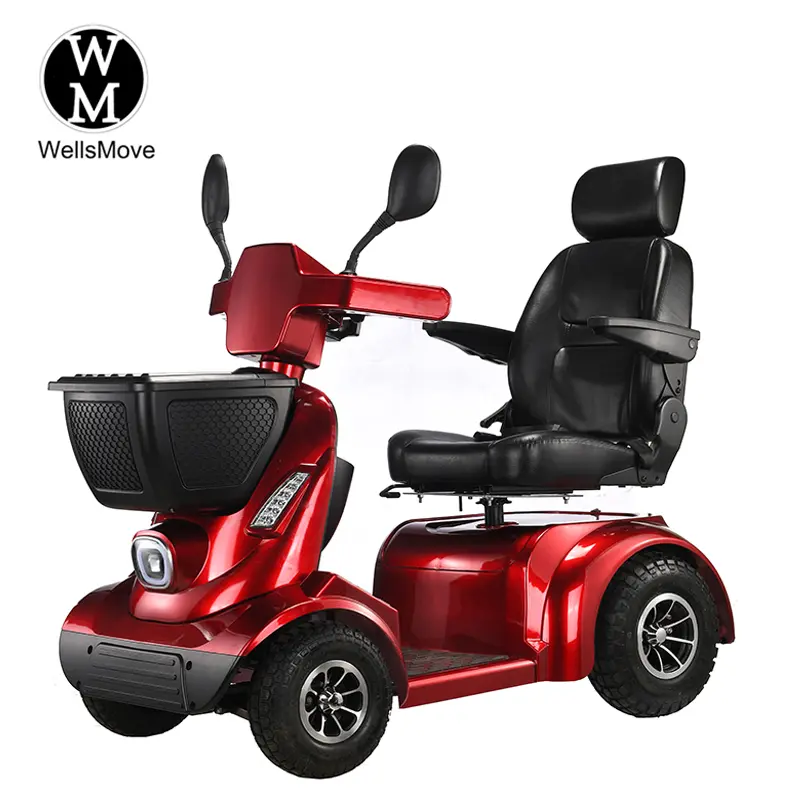Unlocking the Potential of Elderly Three-Wheeled Vehicles in the African Market
I. African Market: The Overlooked Need for Travel for the Elderly
Africa is quietly entering an aging society. Although the current proportion of the elderly population is lower than the global average, with improved healthcare and longer life expectancy, the number of people aged 60 and above in economies such as Nigeria and South Africa has increased by 3.5%. This group faces severe mobility challenges: public transportation coverage is inadequate, and 72% of short-distance trips rely on informal transportation networks. While gasoline-powered three-wheeled vehicles account for 80% of short-distance transportation, they are noisy and produce significant exhaust pollution. For the elderly, walking poses safety risks, riding motorcycles lacks protection, and the bumpy and polluting nature of gasoline-powered three-wheeled vehicles makes them unsuitable for those with fragile health. This creates a stark contradiction between the urgent need for mobility and the supply gap.
The problem is even more pronounced in rural areas. Rural Africa has less than 30% grid coverage, yet boasts an average of 3,250 hours of sunshine per year. Traditional fuel-powered transportation is not only inconvenient to refuel (requiring an extra 10 kilometers per day to find a gas station), but also faces high fuel prices, comparable to those in China, making it unaffordable for elderly families. This dual dilemma of “lack of public transportation and high fuel costs” has created a natural market gap for electric three-wheeled mobility scooters for seniors.
II. Policy Support: Policy Dividends from the Electrification Transition
Many African countries are intensively implementing policies to support electric transportation, clearing barriers to market entry for elderly three-wheeled mobility scooters. Kenya’s “Electric Transportation Plan,” launched in 2023, specifically includes electric three-wheelers in its support scope, offering tax incentives to manufacturers and encouraging banks to provide purchase loans. The goal is to have over 200,000 electric three- and two-wheelers on the road by the end of 2024. Ghana has even introduced an eight-year import tariff exemption for electric vehicles, while also offering VAT concessions for local assembly. Zimbabwe has reduced import tariffs from 40% to 25% and is planning policies to support battery localization.
These policies aren’t limited to commercial vehicles; mobility scooters for seniors, as consumer products, are more likely to receive preferential policies. For example, Ethiopia, in its industrialization drive, has prioritized the import of tricycles for medical assistance and public services, allowing Songguo New Energy’s multi-functional tricycles to enter the local market. The combined effects of these favorable policies and the aging population have created a policy window for electric mobility scooters for seniors.
III. Product Breakthrough: How to Create an “Ai-Senior Mobility Tool” Exclusively for Africa
1. Adapting to Core Needs: Achieving Both Durability and Affordability
Africa’s complex road conditions place stringent demands on products. Luoyang Yanshi Enterprises has proven that tricycles with military-grade frames and electrophoretic coatings can provide reliable service for over 10 years in countries like Burkina Faso. For the elderly, three key design enhancements are necessary: first, a windproof and rainproof carport (adapted to Africa’s six-month rainy season) and adjustable seats and armrests; second, an optimized braking system, shortening braking distance by over 30% to meet Tanzania’s TBS-certified collision safety standards; and third, a dual solar and battery power supply system, enabling a 50-kilometer range with just four hours of daily sunshine, effectively addressing the issue of unstable power grids.
Affordability is key to attracting African consumers. Using Shengqi New Energy’s pricing strategy as a reference, the vehicle price is kept at the same level as a Yamaha motorcycle (approximately 50,000 RMB), while reducing costs by 30% through local assembly. Based on an average daily mileage of 48 kilometers, electric vehicles can save over $2,000 in fuel costs annually, making them highly attractive to elderly Africans with limited retirement pensions.
2. Expanding Functional Scenarios: From Transportation to Public Services
The needs of Africa’s elderly population extend far beyond simple transportation. Songguo New Energy’s medical rescue tricycles are already providing emergency medical services in rural Ethiopia. Models equipped with a small cargo box can meet the needs of elderly people selling agricultural products at market, combining transportation with income generation. For elderly users with impaired vision, voice navigation and rearview cameras are available. For elderly people living alone, models with integrated GPS tracking reduce the risk of theft and allow families to monitor their travel safety in real time. These functional upgrades can significantly increase product premiums.
IV. Implementation Path: The Secret to Successful Localized Operations
1. Compliance and Channels: Overcoming Market Access Challenges
Entering the African market requires overcoming certification barriers. Nigeria’s SONCAP certification requires product testing (covering electrical safety and battery performance), FORM M application, and batch conformity testing. Preparing IEC standard test reports and ISO9001 certificates can expedite the approval process. Tanzania emphasizes compliance with braking performance, collision safety, and lighting systems, requiring specialized testing by the TBS Bureau of Standards. Wanhu Industrial’s “three-in-one” model can be used to build channels: establishing regional distribution centers in Kenya and Tanzania to shorten delivery cycles to 30 days; collaborating with local transport unions and senior citizen associations to promote the product, leveraging word-of-mouth to reduce marketing costs; and collaborating with local banks to launch a “0 down payment + 12 installment” plan, lowering the barrier to entry by 50%.
2. Service and Trust: Building Long-Term Competitiveness
After-sales service is key to alleviating purchasing concerns. Hunan companies’ experience in Mali demonstrates that establishing a spare parts inventory and training local repair technicians can reduce fault response times to within 24 hours. It is recommended that an “extended warranty plan” be implemented simultaneously, offering a two-year warranty on core components such as the frame and battery. Based on Wanhu Industrial’s experience, this can increase customer satisfaction by 25%.
Trust cultivation requires integration with localized case studies. Tanzania’s rental pilot model could be replicated, allowing seniors to experience the product’s advantages through short-term trials. Promotional videos in local languages could be developed to visually demonstrate scenarios such as “Monthly Fuel Savings Comparison” and “Rainy Day Travel Protection” to reinforce cost-effectiveness.
V. Conclusion: A Golden Entry Point in the Blue Ocean Market
As Africa’s 1.2 billion-person population surges into the silver economy, three-wheeled mobility scooters for seniors are no longer simply a means of transportation; they represent a vital necessity that addresses a pressing need. Policy support, the urgent need for fuel alternatives, and the inherent advantages of solar compatibility all combine to form the foundation for this booming market.
Post time: Sep-19-2025



